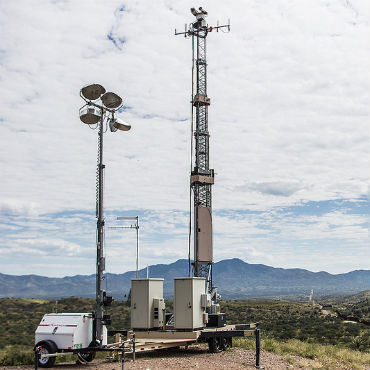Border towers delayed by shutdown

Contracts for high-tech sensor system will wait until at least early 2014.

CBP's integrated fixed towers would complement mobile sensor systems like this unit, seen along the border near Nogales, Ariz. (Photo: CBP)
Customs and Border Protection’s plan to award a billion dollars’ worth of contracts for high-tech sensor towers on the U.S./Mexico border has been sidetracked by the partial government shutdown and federal budget uncertainty.
CBP’s $1.14 billion in contract awards for integrated fixed towers (IFTs) in Arizona were scheduled to be announced this fall. The agency said in an Oct. 30 filing on FedBizOpps, however, that those awards have been pushed to next year.
“The current award schedule has slipped due to the lapse in FY14 appropriations and the U.S. government emergency furlough,” the statement reads. “The schedule...has been revised to reflect an award for the second quarter of FY14.”
The contracts are part of CBP’s efforts to reset its technology plans for border surveillance in the wake of the failed SBInet project. Begun in 2006, the multibillion-dollar SBInet aimed to integrate personnel, infrastructure, technology and rapid response from CBP, Immigration and Customs Enforcement, Citizenship and Immigration Services, and the Coast Guard. It ultimately collapsed in 2011 because, according to then-Department of Homeland Security Secretary Janet Napolitano, the project couldn’t meet its original objective of providing a single, integrated technology solution for border security.
The IFT system is part of DHS’ scaled-back vision for improving border surveillance and detection by using commercial, proven technologies instead of paying vendors to develop new systems. The towers, according to the federal government’s IT Dashboard, will use optical sensors that can see “items of interest” from at least five miles away. Cameras mounted on the towers will also provide near-real-time video feeds to border command stations that can be shared among operators.
Arizona newspapers report that Lockheed Martin and General Dynamics are among the interested vendors. The companies had to use their own money to build model towers and prove they worked.
NEXT STORY: Air Force embraces OASIS


